Unit 1: Thinking Like a Historian
“Thinking Like a Historian” introduces students to the importance of studying history and the role of historians. Students will learn about primary and secondary resources and how they can be utilized for research purposes.

Lesson 1
Why We Study History

Lesson 2
Primary and Secondary Sources

Lesson 3
Role of Historians
Unit 2: Texas Geography and Regions of Texas
“Texas Geography: Regions of Texas” is the study of Texas, the land, and its people. As you travel across Texas, you will experience four different geographical regions: Mountains and Basins, Great Plains, Coastal Plains, and North Central Plains

Lesson 1
Costal Plains

Lesson 2
North Central Plains

Lesson 3
The Great Plains

Lesson 4
Mountains and Basins
Unit 3: Early People of Texas
“Early People of Texas” is a study of the first Texans and their evolution from prehistoric hunter–gatherers to Native tribes. Students will examine the effects of physical and human factors on different cultures during the prehistoric era. They will also study the impacts of technological evolution.

Lesson 1
Prehistoric Texas

Lesson 2
Cultural Evolution

Lesson 3
Native Peoples of Texas
Unit 4: European Exploration, 1519-1690
“European Exploration of Texas” investigates the motives of the European explorers to the New World. Students will identify significant Spanish explorers who made contact with Texas in the 16th century. Students will also study the importance of La Salle and the French challenge to Spanish rule in Texas.

Lesson 1
The Three G's: Gold, God, and Glory

Lesson 2
Spanish Exploration of the New World

Lesson 3
Rio Grande Settlement
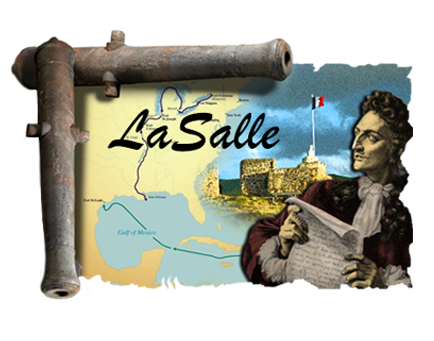
Lesson 4
La Salle and the French Challenge
Unit 5: Spanish Colonial Era, 1690-1821
“Spanish Colonial Era” is a study of Spanish attempts to colonize Texas using the mission system. Students will learn of the multi-faceted role of the missions in Texas and the reasons for their eventual failure. The unit covers the development of Spanish communities and culture in Texas, the Mexican Revolution against Spain, and the legacy of Spanish rule in Texas.

Lesson 1
The Mission System in Texas
1690-1763

Lesson 2
Spanish Texas
1763-1821
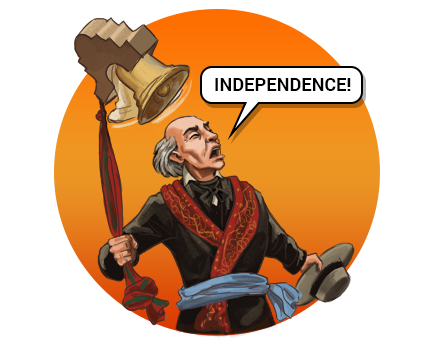
Lesson 3
War of Mexican Independence
1810-1821
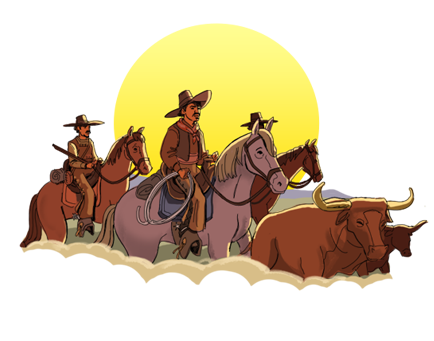
Lesson 4
The Legacy of Spanish Rule
Unit 6: The Mexican National Era, 1821-1835
“The Mexican National Era” is a study of the creation of the Republic of Mexico and Texas’s role in those events. This section will primarily focus on the creation of the Mexican state of Coahuila y Tejas and its place in the Republic of Mexico. Students will also be introduced to Moses and Stephen F. Austin and the emerging conflict between Anglo Texans and the Mexican government.

Lesson 1
The Empresario System

Lesson 2
The Republic of Mexico
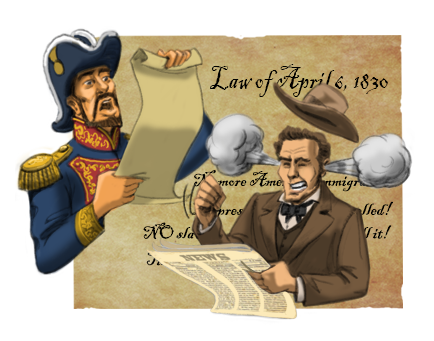
Lesson 3
Conflict Between Anglo Texans and the Mexican Government
Unit 7: The Texas Revolution, 1835-1836
“The Texas Revolution” covers how conflicts between the new Mexican government and the Anglo settlers in Texas led to the war for Texas’s independence. In this unit, students will unpack the causes of the revolution. They will delve into important events and people and analyze the leadership skills that helped the Texians become victorious against the Mexican government.

Lesson 1
Causes of the Texas Revolution

Lesson 2
Beginning of the Texas Revolution
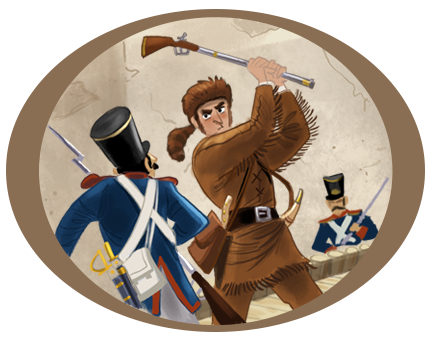
Lesson 3
Battle of the Alamo
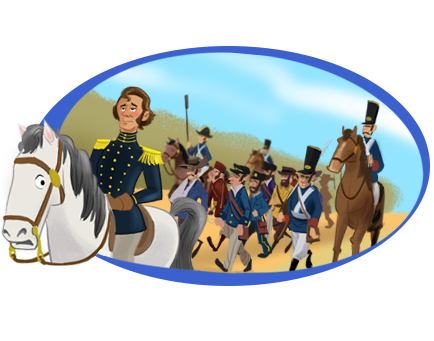
Lesson 4
Goliad Massacre
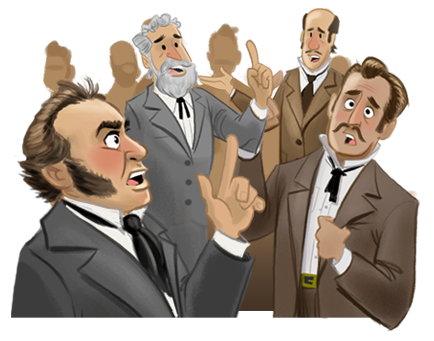
Lesson 5
Texas Independence
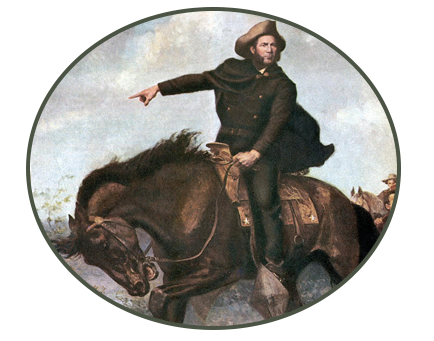
Lesson 6
Sam Houston's Leadership
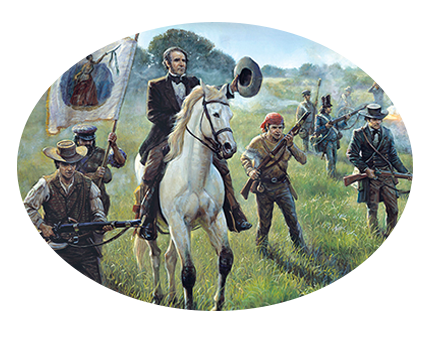
Lesson 7
Battle of San Jacinto
Unit 8: The Republic of Texas, 1836-1845
“The Republic of Texas” is a study of the new republic and its struggles to survive. Students will study the presidencies of Sam Houston and Mirabeau Lamar and how each addressed domestic conflicts and the new Republic’s foreign relationships. Students will also study life in the new Republic and how pioneer families coped with raids, currency inflation, and threats from Mexico.

Lesson 1
The Government
1836-1837

Lesson 2
Lamar: The Poet President of Texas
1838-1841
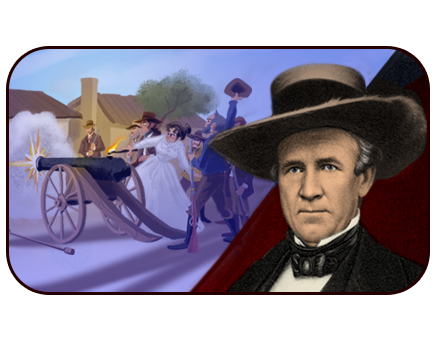
Lesson 3
Houston's Second Administration
1841-1844
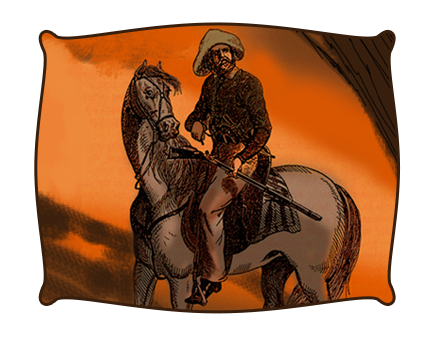
Lesson 4
The Texas Rangers
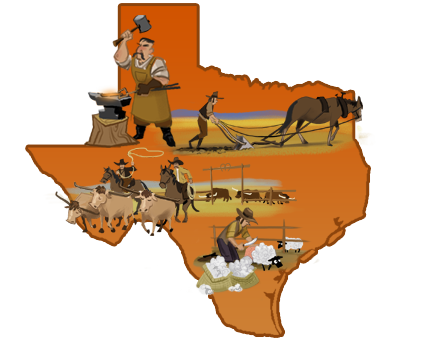
Lesson 5
Life in the New Republic
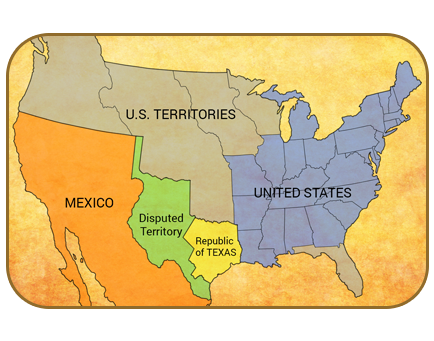
Lesson 6
Annexation
Unit 9: Texas Early Statehood, 1846-1861
“Texas Early Statehood” is a study of the fifteen years between the annexation of the Republic of Texas and the state’s secession from the Union in 1861. Texas annexation immediately led to war with Mexico, an event which had a huge impact on the United States and Texas. While Texas struggled with maintaining peace on its western frontier, Anglo Americans continued to migrate to Texas, bringing with them such elements of Southern culture as cotton, slavery, and Protestantism.

Lesson 1
Manifest Destiny

Lesson 2
The U.S.-Mexican War
1846-1848
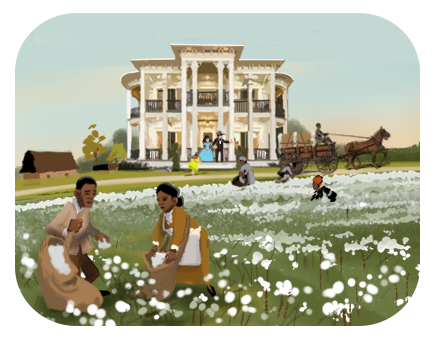
Lesson 3
Antebellum Texas
Unit 10: Texas in the Civil War, 1861-1865
“Texas and the Civil War” is a study of the state’s role in one of the most important events in United States history. Students will study the causes of the Civil War, the role of notable Texans in the war, and how the war impacted Texas both during and after the war.

Lesson 1
Causes of the Civil War

Lesson 2
Texans' Roles in the Civil War

Lesson 3
Texas Civil War Battles

Lesson 4
Life on the Homefront
Unit 11: Reconstruction in Texas, 1865-1874
“Reconstruction in Texas” addresses the events after the Civil War as the state struggled to recover from the economic, political, and social upheaval brought on by the war. Students will be taken from the turmoil of post-war Texas through the complexities of Presidential and Congressional Reconstruction. The unit concludes with an assessment of Republican rule in Texas.

Lesson 1
Post War Texas

Lesson 2
Presidential Reconstruction
1865-1867

Lesson 3
Congressional Reconstruction
1867-1869

Lesson 4
Republican Rule in Texas
1870-1874
Unit 12: The Old West, 1875-1900
“The Old West” is a study of the final conflict between Texans and the Native people of Texas. The until also covers the development of the cattle industry in Texas. Students will learn to discern facts from myths about the lives of Texas cowboys as well as study about Old West violence in Texas.

Lesson 1
Conflict with Native People

Lesson 2
The Cattle Industry

Lesson 3
Old West Violence
Unit 13: The New South, 1875-1900
“The New South” is a study of the state’s path toward modernization. Students will learn of the importance of railroads and their impact on industrialization and urbanization. Industrialization also led to the expansion of commercial agriculture as Texas farmers remained committed to cotton. Expansion led to overproduction and the collapse of cotton prices leading to farm debt and foreclosure.

Lesson 1
The Railroad Industry

Lesson 2
Urbanization

Lesson 3
Agriculture: Expansion and Ruin
Unit 14: The Progressive Era, 1900-1920
“The Progressive Era” is a study of the political, economic, and social reform movement which swept across the nation in the first two decades of the twentieth century and its impact on Texas. Also included in this section is a study of the Great Storm of 1900 and the Spindletop Oil discovery, both of which had enormous long-term effects on the state. This section ends with a study of the state’s role in World War I.

Lesson 1
The Great Storm of 1900

Lesson 2
Spindletop and the Development of Oil

Lesson 3
Early Reforms: Populism and James Hogg

Lesson 4
Reform Movements

Lesson 5
Jim Crow in Texas

Lesson 6
Texas in World War I
Unit 15: The Roaring Twenties, 1920-1929
“The Roaring Twenties” is a study of the dynamic changes that Texas experienced during this decade. The growth of industries paralleled the growth of cities. This section focuses on the social changes that came with the shifting cultural landscape of urban America. Struggles emerged as people clashed along racial, political, and moral lines.

Lesson 1
Economic Prosperity

Lesson 2
Social Tensions in the 1920s

Lesson 3
The Ku Klux Klan

Lesson 4
Fergusonism

Lesson 5
Boom and Bust
Unit 16: Texas and the Great Depression, 1929-1940
“Texas and the Great Depression” is a study of how the Great Depression impacted Texas. Though the economic downturn did not harshly impact Texas at first, this changed over the course of the 1930s. Meanwhile, Texans in the Panhandle had to deal with the windstorms that made the region part of the infamous Dust Bowl. Although President Franklin D. Roosevelt created New Deal programs to help Americans during the Depression, conservative Texans were unsure of its benefits.

Lesson 1
Hard Times in Texas

Lesson 2
The Dust Bowl

Lesson 3
The East Texas Oil Discovery

Lesson 4
Texas and the New Deal

Lesson 5
Opposition to the New Deal in Texas
Unit 17: World War II, 1941-1945
“World War II” covers the period when the United States once again found itself in the middle of a world war. This time the war was brought closer to home with the attack on Pearl Harbor. In this unit, students will study the economic, social, and geographical effect this war had on Texas.

Lesson 1
War Breaks Out

Lesson 2
Wartime Production

Lesson 3
Texans in World War II

Lesson 4
Bound by War: Prisoners in Texas
Unit 18: Modern Texas I, 1945-1969
“Modern Texas I” is a study of the major political, economic, and social developments in Texas in the quarter century after the end of WWII. Central to this section will be lessons on the Civil Rights Movement in Texas, the fight for the desegregation of schools and other civil rights of students, and a look at the political career of President Lyndon B. Johnson.

Lesson 1
Texas and the Civil Rights Movement

Lesson 2
Texas and the Civil Rights of Students

Lesson 3
Lyndon B. Johnson
Unit 19: Modern Texas II, 1969-2010
“Modern Texas II” is a study of the major technological, economic and social developments in the latter half of the twentieth century and into the twenty-first century. The unit covers such topics as advances in aerospace, electronics, and other technologies in Texas, a study of energy sources in the state and how they have changed, immigration to Texas, and a lesson about the diverse cultures of the Lone Star State.

Lesson 1
Science and Technology

Lesson 2
Energy

Lesson 3
Immigration in Texas

Lesson 3
Diversity in Texas Culture
Unit 20: Texas Government
“Texas Government” is a study of the importance of our federal, state, and local governments. Students will learn about the structure of these governments, compare and contrast the Texas and U.S. constitutions, understand the Seven Principles of Government, and become more knowledgeable about the importance of civic participation.

Lesson 1
Comparing the Texas and U.S. Constitutions

Lesson 2
The Seven Principles of Government

Lesson 3
The Lone Star State's Local Government

Lesson 4
Texas Citizens and Civic Participation
